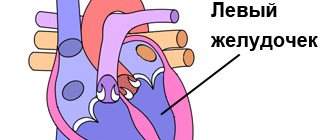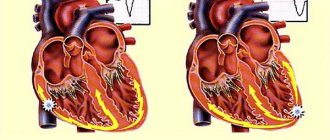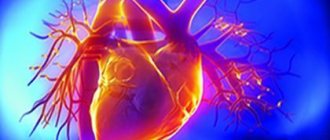Are heart murmurs dangerous? When to sound the alarm?
Heart murmurs can be not only pathological, but also functional – i.e. be an absolutely normal consequence of increased load. Functional noises can occur due to disturbances in blood flow and changes in blood parameters. Their appearance is caused by fever and pregnancy. Pathological noises can be associated with various disturbances in the functioning of the organ itself, pathologies in the functioning of the thyroid gland.
What are the risk factors?
There are many physiological reasons why heart murmurs may occur. These include:
- Causes that are not related to cardiac activity, but have a direct impact on the functioning of the heart. An example is the change in vagal tone observed in vegetative-vascular dystonia.
- Anomalies in the structure of the heart. These are not always dangerous pathologies. In some cases, these are small differences in the anatomical structure of the organ, which are formed in the prenatal period. Possible abnormalities include mitral valve prolapse, accessory chordae of the left ventricle, or the presence of a patent foramen ovale located between the atria. Anatomical deviations can affect large bronchi, which will create compression of the aorta and pulmonary artery, as a result of which blood flow will be slightly impaired.
- Metabolic disorders. A classic example is anemia, when increased work of the heart is necessary to compensate for signs of lack of oxygen. Accelerated blood flow causes noise. Most often, murmurs are auscultated at the apex of the heart.
- Changes in blood viscosity and tachycardia are observed in cases of disturbances in the functioning of the endocrine system (thyrotoxicosis) and in febrile conditions.
- A state of prolonged fatigue caused by various types of stress: physical, mental, mental, can lead to disturbances in the functioning of the ventricles.
- During pregnancy, the occurrence of noise is normal, as there is an increase in the volume of circulating blood. However, such heart murmurs can be considered normal only in cases where the patient was examined earlier and no pathologies were identified.
8
24/7
Pathological causes
- When heart murmurs are detected, the causes may lie in defects. These are disorders that can be either acquired or congenital, affecting the heart and its vessels, in which abnormalities are observed in the anatomical structure of the organ and a predisposition to destruction of the heart valves. Valve damage can manifest as stenosis, insufficiency, or a combination of both. Heart murmurs in adults often develop against the background of tonsillitis or scarlet fever.
- Cardiomyopathy. Dilation of the chambers of the heart or thickening of the myocardial walls, caused by prolonged toxic effects on the heart muscle of thyroid or adrenal hormones. Other causes include hypertension and myocarditis.
- Rheumatic or bacterial endocarditis is accompanied by an inflammatory process of the endocardium and an increase in bacterial vegetation on the valves. The result is heart valve murmur.
- Acute pericarditis is inflammation of the pericardium, which will also be accompanied by the appearance of noise.
Symptoms
Symptoms may vary, since heart murmurs are caused by different reasons. In this case, only a doctor can detect the noise by auscultation.
Possible symptoms accompanying the appearance of noise may include:
- paleness of the skin, general weakness and fatigue (this is how anemia manifests itself);
- increased irritability, aggressiveness, rapid weight loss, tremors (thyrotoxicosis);
- dizziness, emotional lability, fatigue (may indicate VSD).
The following signs may indicate pathology:
- heartbeat disturbances;
- the appearance of shortness of breath at rest and after exercise;
- swelling of the lower extremities;
- dizziness and loss of consciousness;
- chest and chest pain.
Diagnostics
Noises can be determined using the following diagnostic measures:
- auscultation of heart murmurs (listening) is the most effective diagnostic method;
- angiography (allows you to assess the condition of blood vessels);
- chest x-ray;
- EchoCG;
- ECG;
- cardiac catheterization;
- load tests.
8
24/7
The strength of noise is determined using special tests:
- assessment of breathing patterns at the moment of inhalation and exhalation;
- Valsalva maneuver (the patient exhales forcefully, while closing the nose and mouth).
Treatment
Depending on the cause, treatment may be medication or surgery. The preparation of a treatment plan is carried out by a doctor, taking into account many factors: existing medical history, previous diseases, additional symptoms, and the patient’s age.
Drug treatment often involves the use of the following drugs:
- Anticoagulants. They thin the blood and are intended to prevent the formation of blood clots in blood vessels.
- Diuretic drugs. They help bring high blood pressure back to normal, relieve swelling and excess fluid accumulation in the body.
- ACE inhibitors. Used to lower blood pressure.
- Statins. Regulate blood cholesterol levels.
- Beta blockers. Regulate heart rate and lower blood pressure.
It is not possible to manage with one drug during treatment. As a rule, it is necessary to prescribe a whole range of medications. This is due to the fact that disturbances in the functioning of the heart lead to disruptions in the functioning of other body systems. Therefore, specialists of different profiles can participate in treatment.
Drug treatment can reduce the load on the valves, but in case of serious pathologies it is not enough and surgical intervention is required.
The following types of operations can be performed:
- Valvuloplasty. During the operation, a catheter is inserted, at the end of which a balloon is attached. The balloon is inflated, it increases in size, expanding the space around it.
- Annuloplasty. The essence of the intervention is to install a special ring that strengthens the area around the valve. The operation is performed to restore the mitral valve.
- Surgery on the valve or its supporting tissues. Used when it is necessary to repair valves that do not close correctly.
- Another surgical option is valve replacement. It is used when it is impossible to restore the valve due to existing defects.
The operation can be carried out in 2 ways:
- Open heart surgery. During the intervention, a mechanical or biological valve can be installed. Each of them has its own characteristics, so it is selected depending on the overall health situation. A mechanical valve will last longer, but may cause blood clots to form. Its installation will accompany lifelong medication use. Taking anticoagulants is mandatory - it will reduce the risk of stroke.
- Transcatheter replacement. There is no need for open heart surgery. The new valve is installed using a catheter. The catheter is inserted into a vessel located, for example, on the leg and passed to the heart.
Forecast
The prognosis depends on the cause of the noise, the degree of development of the pathology and the treatment performed.
Noises associated with anemia and thyroid diseases can be completely eliminated with treatment.
A conditionally favorable prognosis accompanies the situation with acquired valve defects caused by a prolonged inflammatory process (after surgery).
In case of congenital anomalies of the anatomical structure, active compensatory work is required to maintain the functionality of the body. Because of this, heart failure often develops, which is quite difficult to treat. If congenital defects are detected, treatment must be carried out necessarily. First, they increase the risk of sudden death. Secondly, the organ is at greater risk of developing bacterial endocarditis.
Prevention
Measures should be taken regardless of the age at which a heart murmur is detected.
If a heart murmur is detected in a child, it is necessary to carry out regular examinations in the future.
In adolescence, heart murmurs are most often caused by physiological changes in the body and the growth of the chest. In this case, physical activity and active sports are recommended. To prevent the development of rheumatism, which will have a detrimental effect on the condition of the heart, adequate (if necessary, with the use of antibacterial drugs) treatment of inflammatory processes in the throat, sore throats, pharyngitis, etc. is necessary.
If pathology is detected in patients for whom surgical intervention is contraindicated, it is necessary to pay attention to nutrition: avoid fatty foods, giving preference to fresh vegetables and fruits. This will reduce the risk of developing vascular atherosclerosis. In addition, it is necessary to give up bad habits - smoking, drinking alcohol.
You should not select complexes for physical education without consulting a doctor. The permitted amount of physical activity must be agreed with your doctor.
If a heart murmur occurs against the background of pathologies of other organs and systems (diabetes, endocrine system disorders), it is necessary to carry out treatment for existing diseases.
Early diagnosis of cardiovascular disease is extremely important. This will avoid the development of life-threatening complications. Therefore, preventive examinations are recommended - visit a specialist once a year to assess how the heart is working.
8
24/7
Heart murmurs in children
One of the common signs of heart damage is heart murmurs. In children, they are divided into systolic and diastolic organic and functional in origin . Heart murmurs in children vary in volume, duration, timbre, zone of maximum localization and area of preferential conduction, connection with systole or diastole. Consultation and examination by a pediatric cardiologist - Markushka polyclinic.
Organic heart murmurs in a child
Organic noises can occur in systole and diastole and are characterized by a fairly definite and constant connection of the sound phenomenon with the anatomical substrate in the form of changes in the walls, openings or valves of the heart or pericardium. These include noises caused by acquired and congenital defects of the heart and great vessels, inflammation of the endocardium and pericardium, and the sound phenomenon of clicks and noises of mitral valve prolapse. The organic nature of the noise can be evidenced by diastolic, pansystolic noises, noises at the end of systole and those combined with tremors, very loud noises, noises that are accompanied by some disorders of the cardiovascular system - pulse asymmetry, clicks, pathological splitting of tones, etc.
Systolic heart murmurs in a child
Systolic murmurs are divided into pansystolic, early, middle, late. Systolic murmur occurs with congenital and acquired defects of the heart and blood vessels.
Diastolic murmurs in children
Diastolic murmurs in children in the vast majority of cases have an organic origin and occur with insufficiency of the semilunar valves of the aorta and pulmonary artery, stenosis of the left and right atrioventricular orifices, pathological discharge of blood in diastole (aortopulmonary septal defect, patent aortic duct, common truncus arteriosus with truncus valve insufficiency and etc.). Unlike systolic murmurs, the intensity of diastolic murmurs correlates with the severity of the defect. Protodiastolic murmur is characteristic of semilunar valve insufficiency, mesodiastolic and presystolic murmurs occur with stenosis of the atrioventricular orifices.
Functional noise
Functional noises can occur in practically healthy children at various ages.
Along the path of blood flow originating from the systemic veins through the heart to the aorta, five normal murmurs may occur, which can be defined as follows.
Spinning top noise (connection of the jugular, subclavian and innominate veins with the superior vena cava). Continuous, often with diastolic accentuation, is best heard under the right clavicle, can be carried into the upper part of the chest on the left, completely disappears in the supine position, which allows it to be differentiated from the murmur of a patent aortic duct or arteriovenous fistula. Murmur on the pulmonary artery (connection of the right ventricle with the pulmonary trunk). It is best heard in the 2nd intercostal space at the left edge of the sternum, can be heard slightly up and down, a wide, fixed splitting of the 2nd sound suggests that the murmur is pathological and may be caused by an atrial septal defect. Murmur of physiological peripheral pulmonary stenosis of newborns (branching of the pulmonary trunk). It is best heard in the upper third at the left edge of the sternum, extends well into both subclavian regions, the back, and also slightly down along the left edge of the sternum, disappears during the first year of life. Atrial vibrating murmur , or Still's murmur (connection of the left ventricle with the aorta). Best heard medially from or above the apex, conducted medially to the lower and middle third of the left sternal border, usually has a much stronger musical component than any of the other normal sounds, and is often described using various terms - vibrating, moaning ", "sounding string". Supraclavicular murmur , or murmur over the carotid artery (the connection of the brachiocephalic vessels with the aortic arch). Best heard in the neck above the collarbones, usually bilateral, can be carried down into the infraclavicular areas.
Other groups of functional noises in children
Noises due to autonomic dysfunction due to changes in muscle tone, especially papillary muscles (shortening or lengthening of muscles), which creates conditions for incomplete closure of the valve leaflets. More often, such noises occur in adolescents who, along with autonomic dysfunction, have increased activity of the thyroid gland.
Heart formation murmurs arise due to the fact that different parts of the heart grow unevenly, which causes a relative discrepancy in the sizes of the chambers and openings of the heart and blood vessels, which leads to turbulence in the blood flow and the appearance of the murmur. There may be unevenness of individual valve leaflets and chords, which leads not only to a temporary failure of the valves' closing function, but also to a change in their resonant properties. These murmurs are most often heard on the pulmonary artery in children of preschool and preschool age, and at the apex in school-age children.
Murmurs of muscle origin are caused by a decrease in the tone of the papillary muscles or the entire myocardium. They are often the result of incomplete closure of the valve leaflets and blood regurgitation. The causes of these noises are acute or chronic dystrophic changes in the myocardium, metabolic disorders in the heart muscle (mucopolysaccharidosis, glycogenosis, etc.).
Murmurs of “small” anomalies of the heart and blood vessels are considered borderline murmurs. This is usually a violation of the architectonics of the trabecular surface of the myocardium or the original location of the chords, the structure of the papillary muscles, small holes in the septa, mildly expressed stenoses of large vessels, etc., creating turbulence in the blood flow, resulting in noise.
Unlike organic noises, functional noises occupy a limited area, are not carried out beyond the cardiac region, are gentle in timbre or have a vibrating, “string” character. Such noises are not constant, their intensity varies depending on the phase of breathing and the position of the child’s body. They are better heard when lying on your back; in an upright position and after physical activity, their intensity weakens significantly or they disappear altogether; they are characterized by lability over time - disappearing or intensifying when listening at short intervals.
Children with functional (atypical) murmurs
Conventionally, children with functional (atypical) noises can be divided into three groups.
Healthy children with clearly functional murmurs such as a formation murmur or a pulmonary artery murmur. Children with murmurs of muscle origin requiring immediate or routine examination. Children with murmurs requiring dynamic monitoring and hemodynamic monitoring.










